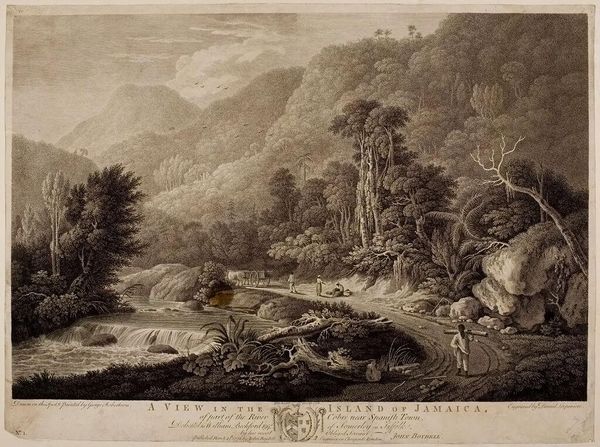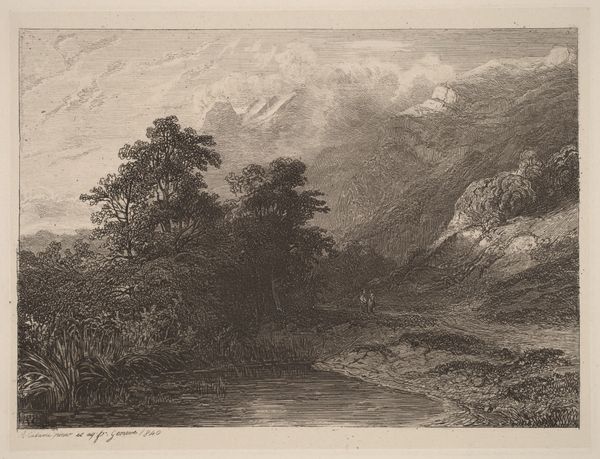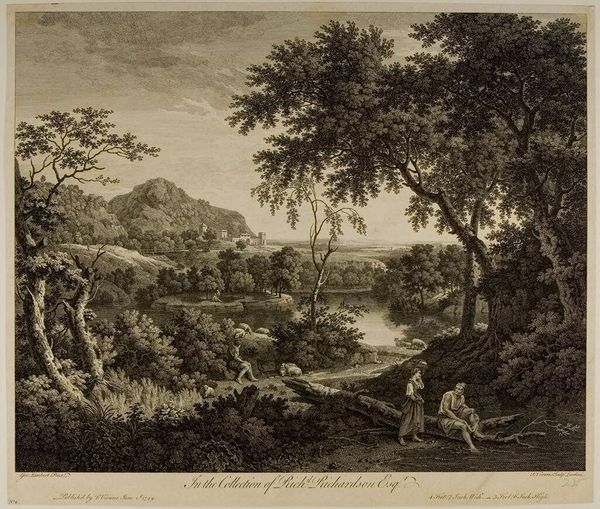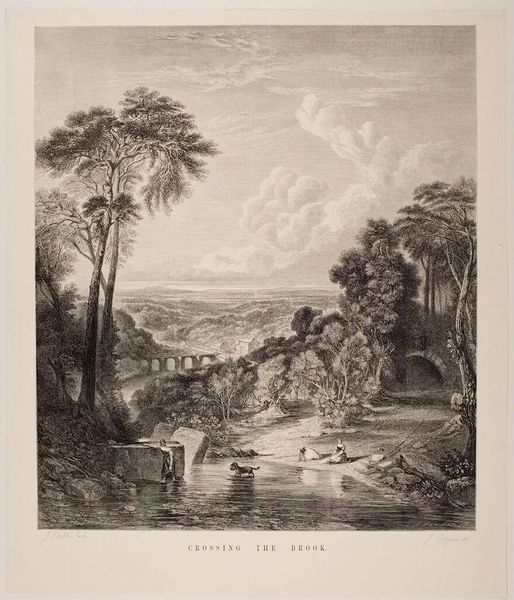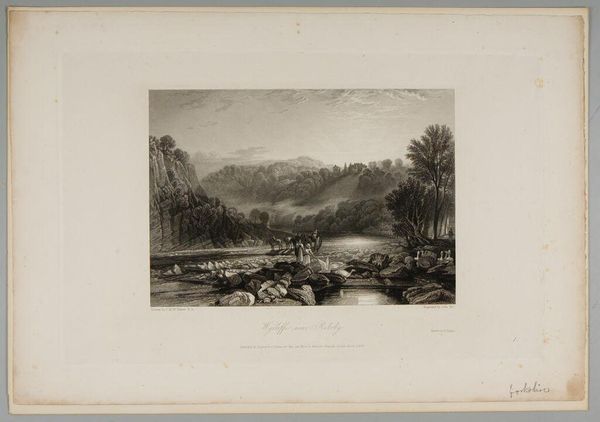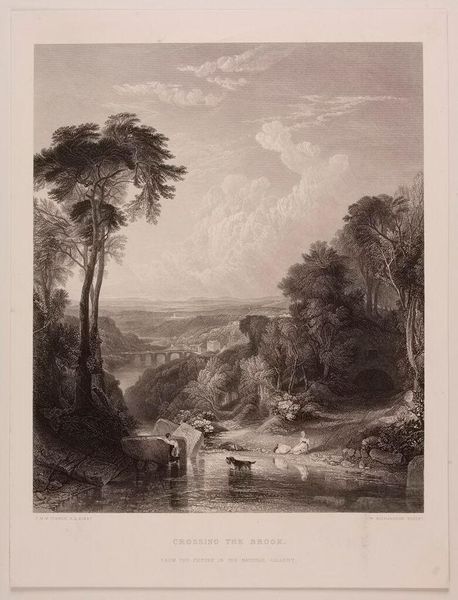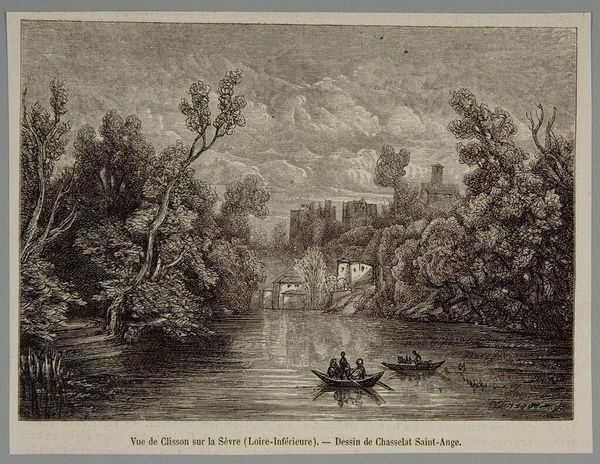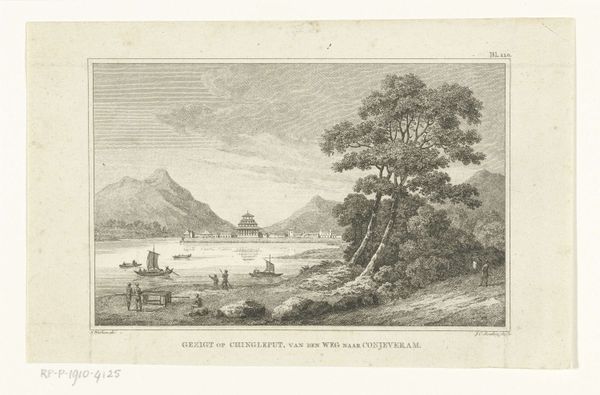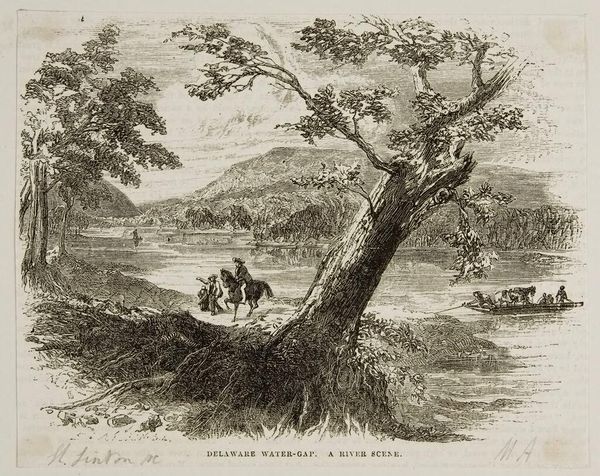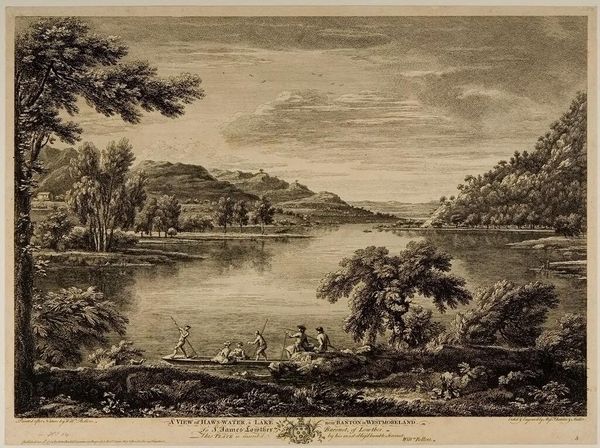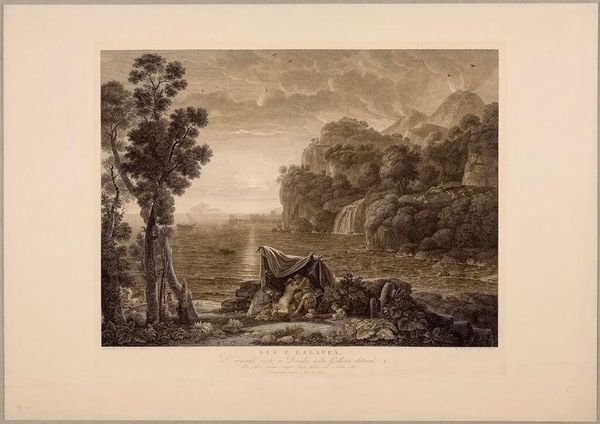
Copyright: CC0 1.0
Curator: This is Henry Duff Linton's "Esopus Creek," housed here at the Harvard Art Museums. I'm struck by the quietude of the scene. Editor: Yes, but also by the labor involved in creating this image. Look at the intricate, dense lines, clearly wood engraving, a medium demanding great skill and time, likely reproduced for mass consumption. Curator: Absolutely. The scene is peaceful, but the purpose might have been to promote the settlement or tourism of the area, shaping perceptions of the American landscape. Editor: Consider the materials too – the wood block, the ink, the paper – all products of industries tied to resource extraction and manufacturing. Who was consuming this and what were they doing with it? Curator: Good point. Images like these were circulated widely, influencing understandings of nature and perhaps obscuring the impact of industrialization on the very landscapes they depicted. Editor: Precisely. It's important to look beyond the picturesque to understand the social and economic forces behind its making and distribution. Curator: A perfect reminder that art is never separate from its context. Editor: Indeed, it’s always interwoven with material reality and societal power structures.
Comments
No comments
Be the first to comment and join the conversation on the ultimate creative platform.
